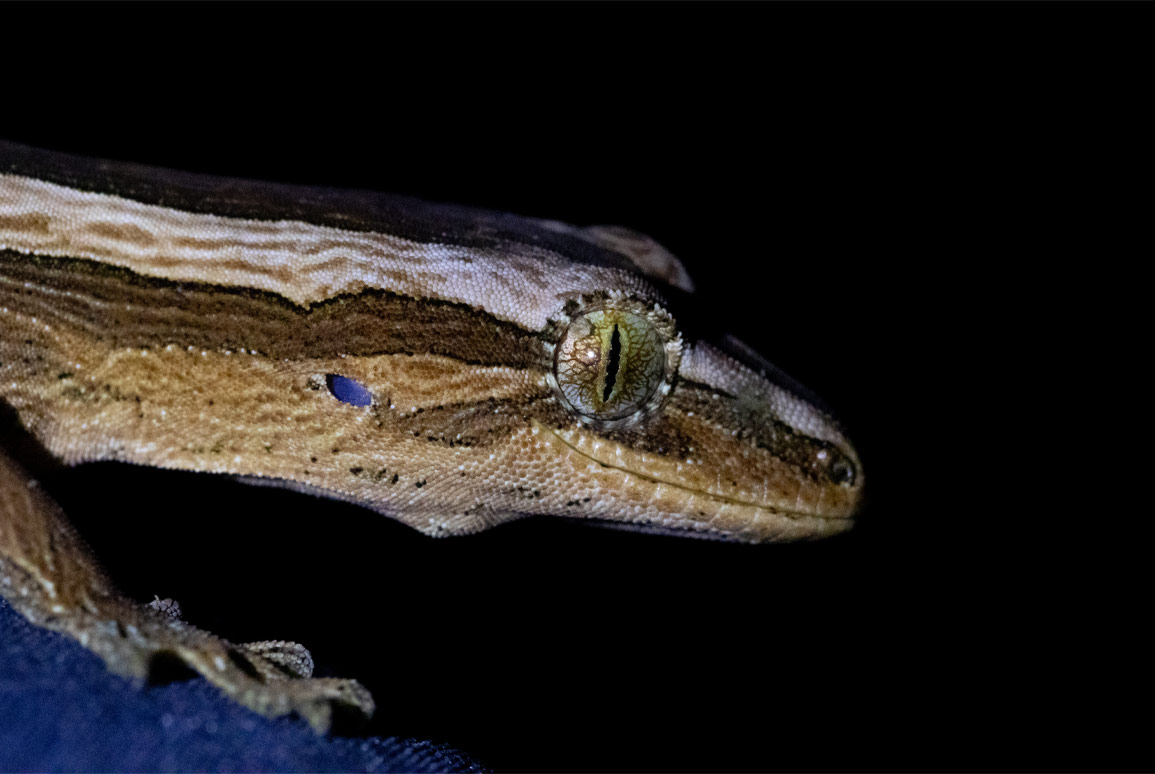Ecologists make a surprise discovery
24 May 2022
Ecologist Matt Turner reports on finding a rare gecko in an unexpected spot on the Coromandel Peninsula.

The characteristics of New Zealand’s indigenous lizards create complications for research and conservation efforts. Cryptic in appearance and behaviour, their colourations have evolved to match the microhabitats they occupy within their ecosystem making their detection often difficult. This is further exacerbated by some species often being found in low densities and in complex and extreme habitats, from dense rainforests up into the alpine zone above 1000m in elevation.
It is no surprise that new discoveries of populations and species of native lizards are being made with accidental discoveries regularly occurring. For instance, one of New Zealand’s newest identified gecko species, temporarily named the Sabine gecko (Woodworthia “Sabine”), was discovered in early 2021 in the Nelson Lakes National Park during searches for the “holy grail” of geckos, the Cupola gecko (genetic testing later confirmed the Cupola gecko to be a forest gecko, Mokopirirakau granulatus, and not a distinct species).
During Boffa Miskell’s work surveying critically endangered Archey’s frogs (Leiopelma archeyi), a rare Northern striped gecko was incidentally discovered during nocturnal surveys in montane forests, northeast of Thames on the Coromandel Peninsula. This finding was unexpected, as the individual was encountered outside the known distribution of the species and was the first gecko found in this area of the Coromandel Forest Park. A second Northern striped gecko was spotted nearby during a subsequent frog survey two weeks later. New discoveries like this further our knowledge on the ecology and distribution of the species.
The nationally vulnerable northern striped gecko, scientific name Toropuku inexpectatus, aptly meaning “surprise discovery”, is one of two geckos in the genus Toropuku, both distinguished by their distinctive dorsal stripes. They are a nocturnal, arboreal species, that occupy dense forest habitat. Until around ten years ago only three individuals had ever been seen, where for a time it was considered the rarest gecko in the world. Recent surveys have confirmed they are widely distributed throughout the northern Coromandel Peninsula; however, these geckos are still rarely seen by people. Like many of New Zealand’s lizards, introduced mammalian predators and habitat loss have likely contributed to the rarity of this species.
My career pathway has always revolved around my passion for lizards and has allowed me to encounter some of New Zealand’s rarest lizards; but this unexpected meeting with a northern striped gecko has been the most memorable experience yet.
Find out more
An unexpected discovery: Canterbury spotted skink
For further information please contact Matt Turner or Katherine Muchna

